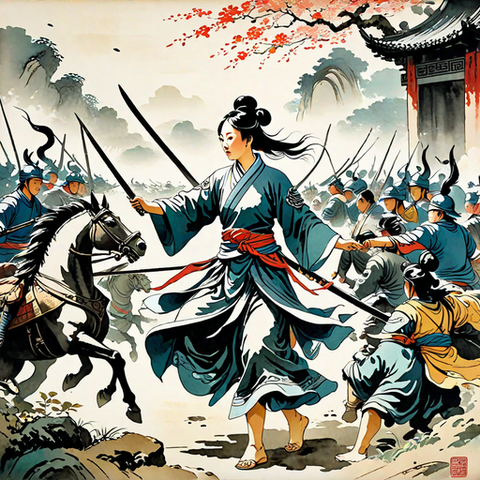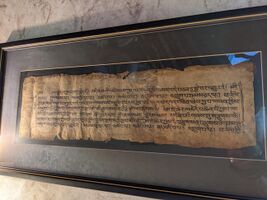The Legend of Yangchen
This article is incomplete because it is pending further input from participants, or it is a work-in-progress by one author. Please comment on this article's talk page to share your input, comments and questions. Note: To contribute to this article, you may need to seek help from the author(s) of this page. |
| The Legend of Yangchen | |
|---|---|
| Qanupaq: Ya Tzhanen u Yangchyen | |
| Yangin: Tyozh Dzhanen yu Yangchen | |
 Painting of Empress Yangchen slaughtering the invading tribe of Azunga | |
 Ancient Tibetan Scroll containing the Legend of Yangchen, written around 1500BC | |
| Written: | 3000BC |
| Namesake: | Empress Yangchen Guul-La |
The Legend of Yangchen (Qanupaq:Ya Tzhanen u Yangchyen ; Yangin: Tyozh Dzhanen yu Yangchen) is a famous non-fictional Legend from the Gesaria Region and Tibet. The legend follows the life of Yangchen Guul-La, empress of Ancient Yangchenia in 3000BC and a fearsome warrior, known for her battle prowess and merciless nature.
The first half of the story discusses the early childhood of the Empress, how she was a sheltered and worshipped child of the famed Emperor Kaisheng and Empress Lhotse. After the death of the couple when Yangchen was 16, she took the throne and quickly cemented herself as the undisputed leader of the Empire. She had her enemies thrown into dungeons and tortured until they either gave up on challenging the Empress's rule or died. After the breakdown of relations and the rise of a hostile and aggressive leader, the enemy tribe of Azunga, who suddenly invaded her Kingdom and burned many villages to the ground, killing many people. Yangchen immediately called up her army and faced the Azungas in battle, where Princess Yangchen single-handedly killed 7,000 men by herself. She went on to inflict many more defeats on the Azunga with her army of 7,000 , inflicting nearly 56,000-89,000 casualties on the Azunga, which represented nearly 75% of their male population. In March of 2975BC, her army reached the Azungan capital of Garjin, where she proceeded to defeat the city defenders and burn Garjin to the ground.
The second half of the story discusses the aftermath of the burning of Garjin. After burning the city to the ground, the Empress had ordered all of the city's residents to be gathered up. Those who were weak and useless to her were executed, while those who were capable of labor were taken into slavery. Amidst the rubble of the city, it is said that the Empress found a young girl who was an orphan, no more than 8 years old. The Empress, being touched by the child's supposed kindness to her, adopted her and made the child her heir.